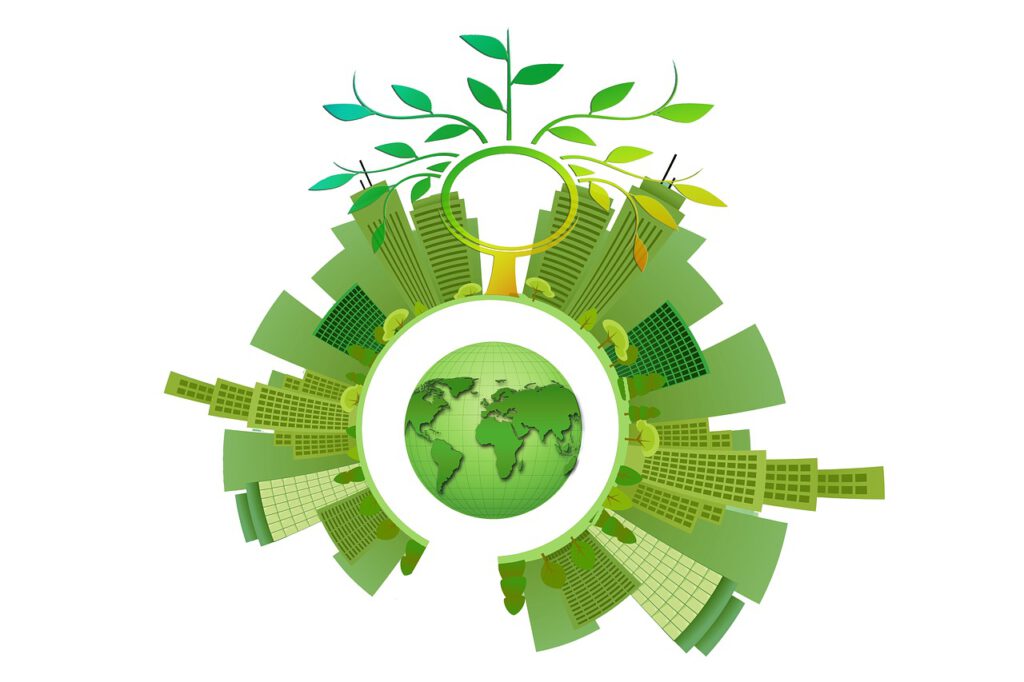How can your school, college or business profit from renewable energy?

For business owners concerned about the environment, making the switch to renewable energy can reduce your environmental impact and contribute towards the wider decarbonisation across the UK’s electricity network.
It’s also a way for a business to diversify, by bringing in a new stream of revenue. If done right, it can be low effort, high impact and good for the environment too.
Not forgetting of course, that as consumers become increasingly environmentally aware, they are actively looking for suppliers who can provide them with sustainable options.
It’s important to acknowledge though, that adopting and generating renewable energy to keep your business powered can feel like an impossible and complicated task. Whilst you may have done all the desk research possible, it is likely you may still feel unprepared for this change.
Here, Opus Energy, the renewable energy supplier to businesses across the UK, has shared its tips to help you get started with solar panels and demystify the process.
1. Find a developer and an installer
The first thing you need to do is find a partner who can install your panels, recommendations for which can be suggested by a trusted partner, such as your current energy supplier. These partners will be with you every step of the way and are the perfect people to inundate with any questions or concerns you may have. Different developers will have expertise in different areas, so being pointed in the right direction can ensure you find the right solution for your business.
You can also find local approved installers on the Microgeneration Certification Scheme website. Procurement advice says a good rule of thumb is to get at least three quotes to help you compare rates, which should also be applied when selecting a developer.
2. Arrange a contract
There are multiple considerations to bear in mind when installing solar panels. What design to choose and the level of payback that design will provide need to be considered. You’ll want certain warranties for your equipment, and you’ll want to make sure all costs are upfront with nothing hidden.
You may also need to have an operations and maintenance package dependant on your system size, as some guarantees and warranties require a regular service.
Your installer should conduct a site visit to make sure everything’s in order during this process. They’ll check things like whether your roof is suitable for installing panels (the right size, angle and sunlight exposure) or if your electrical connection can accommodate the extra current coming from your generator, for example.
Once your contract is signed, an engineer from the developer you choose will inspect your site to make sure everything will be compatible with your new system.
3. Decide if you want to sell your energy
Your contract will include whether you will export energy. If you’re generating power, there’s a good chance you’ll be using this power yourself to help cut down your business electricity bill.
However, a particularly sunny day may generate more than you need. Some developers will be able to help you export this energy to sell it to your supplier at the market rate. This is known as a PPA – a ‘power purchase agreement’ – and means more money for you and more renewable energy for the UK.
Your electricity supplier can also help assist you in setting up export MPANs (your meter supply point) and the required metering that will need to be installed to allow your system to export the surplus energy. In this case, an export meter operator contract will be required between you and the company you choose to have a PPA with to enable this to happen.
4. Installation day
Small installations can be done in one or two days, with larger installations taking a week or more. For roof installations, scaffolding will go up to support the works, before a frame is attached to add on your solar panels. Once the electrical systems are wired up, you’re good to go.
5. Go live
Your solar panel system will begin converting light photons into usable electricity, which will then be stored in a battery bank to power your premises when you need it, or be pushed back into the National Grid via your partner energy supplier. This is when you can start generating income.
6. Watch your carbon footprint shrink…
…and watch your revenue grow. Most generation systems will come with a digital platform where you can track exactly how much energy you generate and how much money you make, if you choose to sell it on. This means you can watch, in real-time, the money you’re making for your business.
Adopting and generating renewable energy might seem daunting but it’s important to rely on your partners and those in the know to guide you through the process. After all, whilst adopting these technologies can add to your profit margins, they can also bolster your company’s brand by demonstrating the business’s commitment to social responsibility. Whilst we’ve focused on solar power here, there are other options out there, so make sure you explore them as well.
Whether social impact or environmental awareness is part of your brand positioning, or whether you’re simply the kind of business owner that wants your customers to know that you care about the bigger issues, choosing renewable energy is a very easy way to make your mark.











Responses